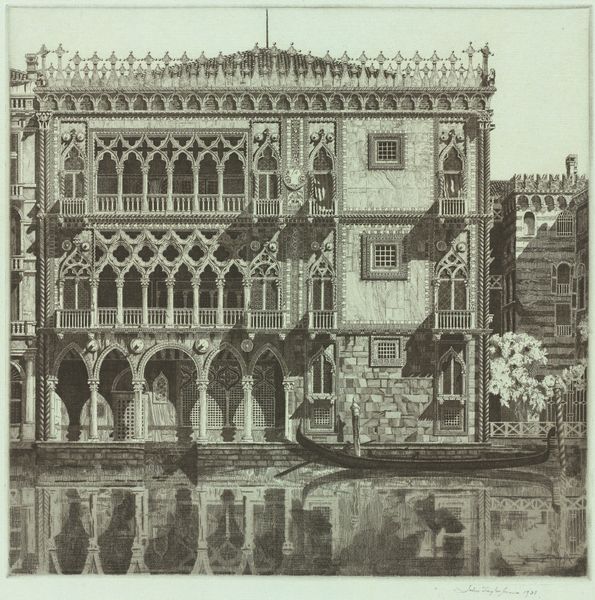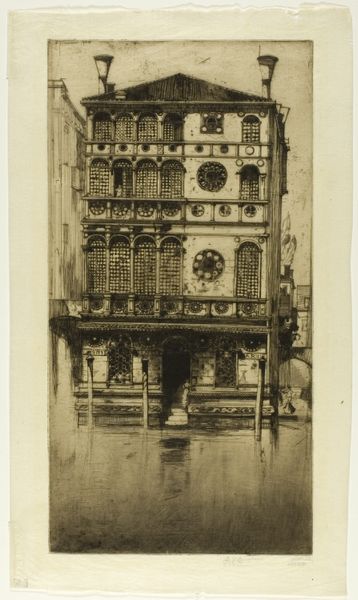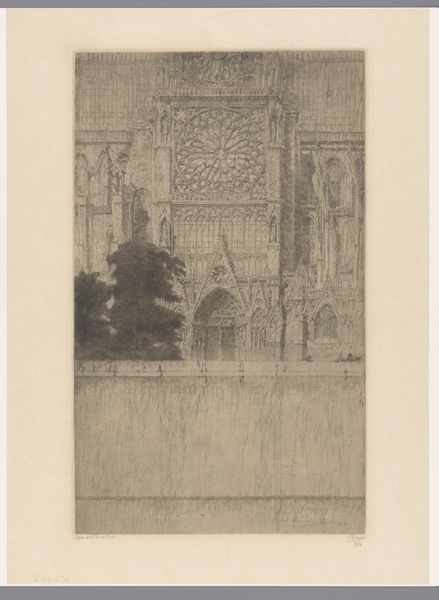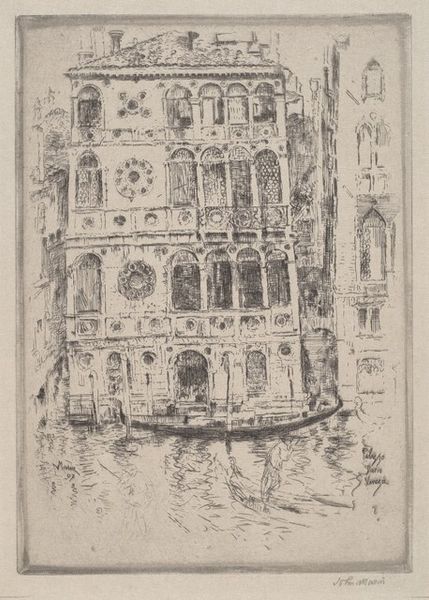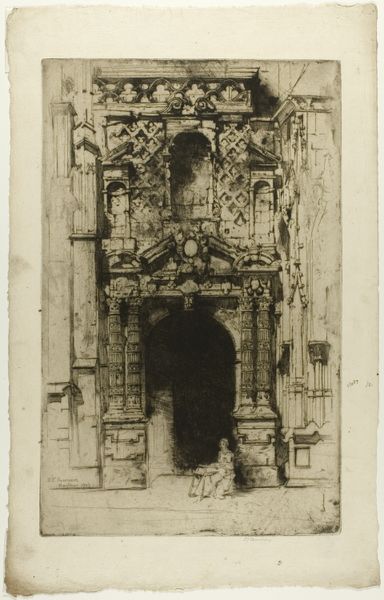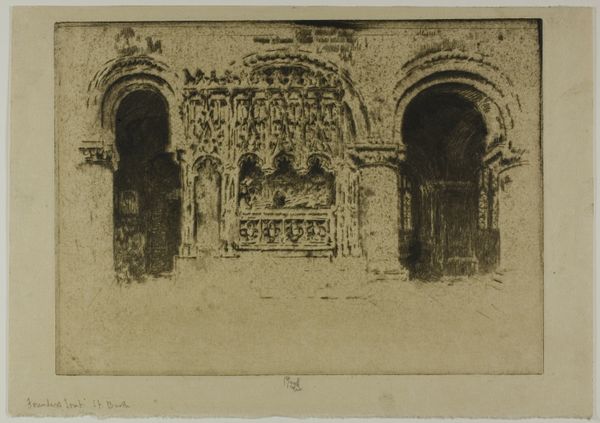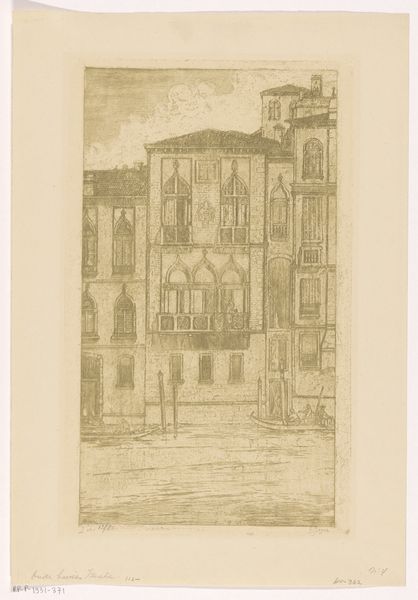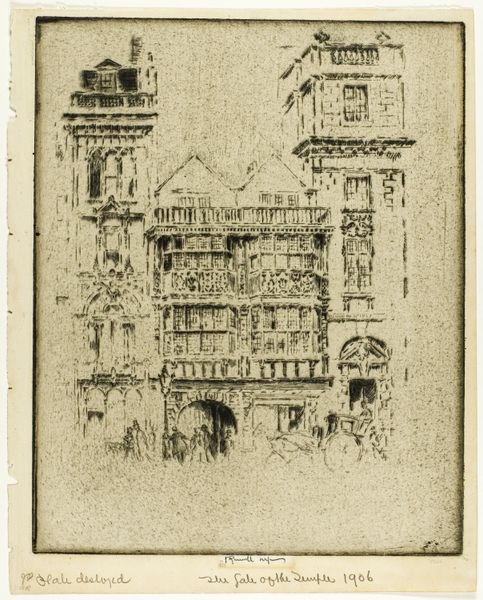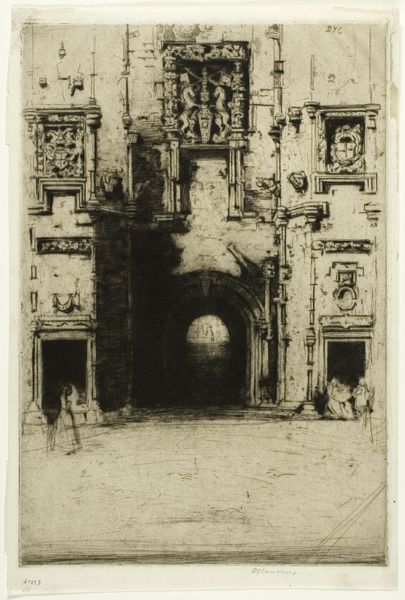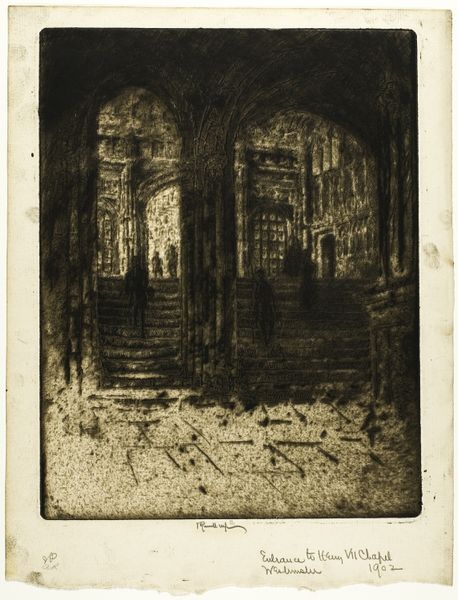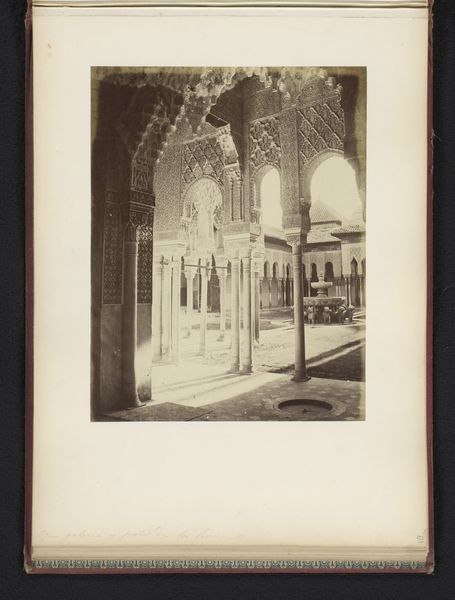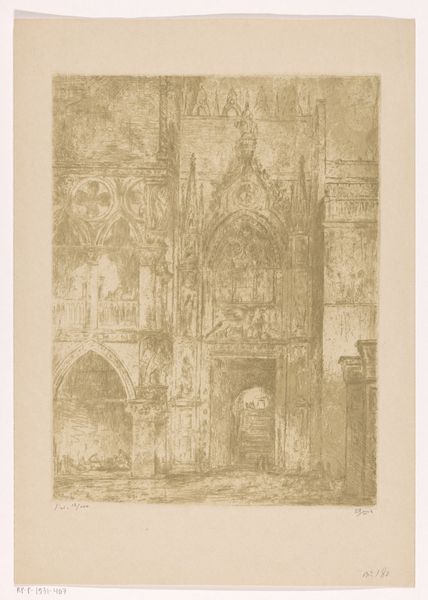
Dimensions: 278 × 203 mm (plate); 335 × 240 mm (sheet)
Copyright: Public Domain
Curator: Here we have David Young Cameron’s "Cá d'Oro", an etching printed on paper, created around 1900, now residing here at the Art Institute of Chicago. Editor: My immediate reaction is one of almost melancholic grandeur. The intricate detailing juxtaposed with the stillness of the water evokes a sense of faded glory, a place haunted by its past. Curator: That feeling is likely intended. Consider that the “Cá d’Oro,” also known as the Palazzo Santa Sofia, was a very public display of wealth and power for the Contarini family in its time. Cameron's choice to depict it via etching, a process itself reliant on labor and specific material conditions, further complicates this image. Editor: Exactly! Etching inherently involves labor - the acid, the plate, the printing – the means of production are key here. This laborious technique translates the luxurious facade into something reproducible, almost challenging the inherent uniqueness of the original palazzo. Is Cameron critiquing the consumption of art and wealth? Curator: Possibly. One could argue he is democratizing access to a symbol of aristocratic Venice, enabling its mass consumption through printmaking, making this piece available beyond elite circles, which could serve as an equalizer. The act of recreating, disseminating, becomes almost subversive. Editor: Subversive in material terms, indeed. The availability of this print makes tangible questions about access to space, visual art, and the historic power encoded in architectural grandeur available to broader demographics and subsequent labor practices and value attribution around the work of the artist himself. It's almost a commodity itself, perpetuating its own form of historical, perhaps academic, elitism now, too. Curator: It reminds me how our perception of history and our place in it is shaped, especially by artists like Cameron who invite us to actively interpret inherited symbolism through both technical mastery and material presence. We question legacies. Editor: Agreed. Looking at the layers of the etching itself reminds me of what art objects can tell us about our relationship to labor and legacy when we attend closely to material. Thank you. Curator: Likewise; Cameron pushes us to engage deeply with both the artistic process and cultural implications, interrogating power dynamics embedded within seemingly tranquil scenes, an ever-important reminder of constant interpretation.
Comments
No comments
Be the first to comment and join the conversation on the ultimate creative platform.

